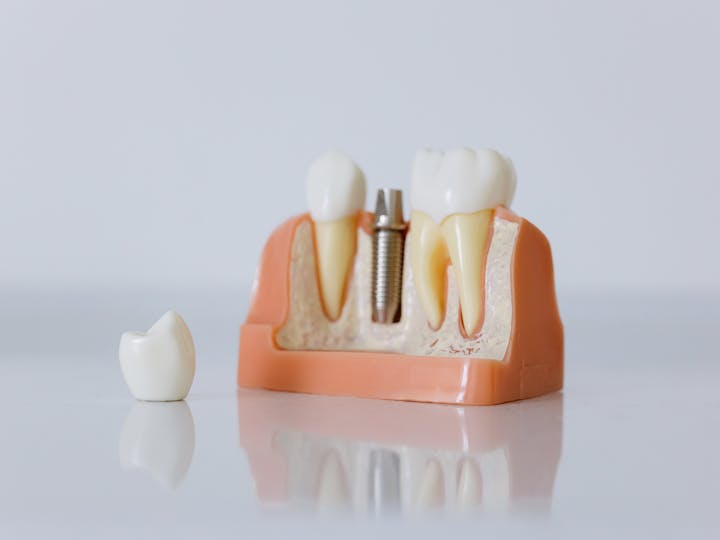Dental implants have changed the paradigm of tooth replacement by offering a permanent, natural-appearing, and long-lasting solution. Unlike their more traditional counterparts like bridges or dentures, implants bond to the jawbone to provide a very stable base for the prosthetic tooth. The bonding process-the integration-is termed osseointegration. It is the basic reason implants can last for so long. However, the success of the implantation and the longevity of the implant depend on the ability of the jawbone to bear its weight adequately; that is when bone grafting for dental implant procedures takes importance based on the need to adequately support the implant in individuals willing to restore their smile, including those considering Maple Dental Health teeth implants.
Why is Bone Grafting Necessary?
Tooth loss whether through decay, periodontal diseases, trauma, or extraction, initiates a slow resorption of the jawbone. Without the root stimulation of a tooth, the bone diminishes in height and perhaps width as well as density. So, in cases where you’ve lost teeth for quite a number of years or have also lost a lot of bone, your jaw might face the problem of not being strong enough or having enough volume for dental implants to be implanted securely.
Imagine constructing a house: one wouldn’t build it on an unstable foundation. Similarly, the dental implant needs to be grounded in firm bone capable of resisting dynamic forces created during chewing and biting. Over time, exposure to these forces without adequate bone support would loosen the implant, compromising integration and may end up falling out. Hence, bone grafting replenishes lost bone, creating a sturdy and stable foundation, and allows for Maple Dental Health teeth implants to be a treatment option for many more patients.
Types of Bone Grafting Materials
Bone grafting procedures require grafting materials meant for the growth of new bone. There are a number of different grafting materials commonly used:
Autograft: The “gold standard” because it is bone taken from another site of the patient’s own body (e.g., chin, jaw, or hip). Since it’s your own bone, there is a very minimal chance of rejection, and it stimulates new bone formation effectively.
Allograft: This material is taken from another human being (cadaver) and then carefully processed and sterilized for safety.
Xenograft: This involves bone material obtained from a different species, typically bovine or porcine. Like an allograft, the materials derived from animals undergo rigorous processing to ensure biocompatibility and safety.
Alloplast: Synthetic bone graft materials, usually made from biocompatible ceramics such as hydroxyapatite. It acts as a scaffold for natural bone formation.
Your dental surgeon will then explain to you the best grafting material suited for your needs; this would largely depend on the severity of bone loss and your general health status.
Starting Step in the Bone Grafting Process
The bone-grafting procedure normally consists of a few steps:
Anesthesia: Local anesthesia is given to numb the specific region, so the patient doesn’t feel any pain during the procedure. Sedation procedures can be undertaken if the patient suffers from anxiety.
Incision: A tiny incision is made through the gum tissue so that the underlying jawbone may be exposed.
Placement of Graft: Chosen bone graft material is meticulously packed in the deficit site of the bone, and occasionally, the physician places a protective membrane over it to help stabilize and guide bone regeneration.
Stitches: Finally, the gum tissue is repositioned and stitched closed.
Depending upon the extent of the graft, the soft tissues would usually take a couple of weeks for its initial healing; however, the bone must heal for many months (generally 3-9 months, or even up to a year for bigger grafts) for the proper merging and regeneration to occur before the dental implant can be executed. This period is quite essential to ensure the graft has resulted in a firm and stable base.
Second and Further Benefits
Bone grafting allows for the important implementation of dental implants, but this procedure can also have other solid outcomes related to the maintenance of oral health. Bone grafting is done to preserve the structure of the jawbone post-tooth extraction so that additional bone loss affecting neighboring teeth occurring isn’t aggravated; it is also conducted to help with bone loss due to severe periodontal disease, in order to stabilize existing teeth and enhance overall periodontal health.
Bone grafting, therefore, represents an advanced but very commonly carried out procedure that opens the door to suitable tooth replacement by means of dental implants. For those that require a splint, like Maple Dental Health teeth implants, identification of this initial step assures an end result that sustains a healthy and confident smile for years to come.


